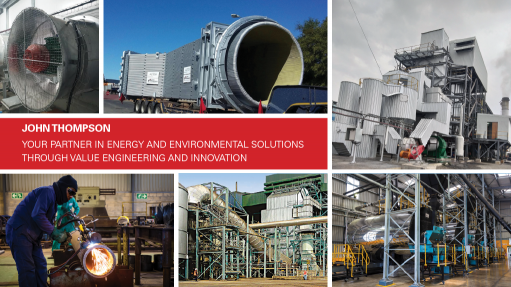Electric car demand booming, with sales forecast to increase by 35% this year
Global sales of electric cars are set to surge to yet another record this year, says the International Energy Agency (IEA).
The newest edition of the agency’s ‘Global Electric Vehicle Outlook’ report notes that electric cars will expand their share of the overall car market to close to 20%, in a major transformation that has implications for the energy sector, especially oil.
The report shows that more than ten-million electric cars were sold worldwide last year, and that sales are expected to grow by another 35% this year to reach 14-million units.
This explosive growth means electric cars’ share of the overall car market has risen from about 4% in 2020, to 14% in 2022, and that it is set to increase further to 18% this year, based on the latest IEA projections.
“Electric vehicles (EVs) are one of the driving forces in the new global energy economy that is rapidly emerging, and they are bringing about a historic transformation of the car manufacturing industry worldwide,” says IEA executive director Faith Birol.
“The trends we are witnessing have significant implications for global oil demand.
“By 2030, [EVs] will avoid the need for at least five-million barrels a day of oil. And cars are just the first wave – electric buses and trucks will follow soon.”
The IEA report shows that the overwhelming majority of electric car sales to date are mainly concentrated in three markets – China, Europe and the US.
China is the frontrunner, with 60% of global electric car sales taking place there last year.
Today, more than half of all electric cars on the road worldwide are in China.
Europe and the US, the second- and third-largest markets, both saw strong growth in 2022, with sales increasing 15% and 55% respectively.
Ambitious policy programmes in major economies, such as the Fit for 55 package in the Europrean Union (EU) and the Inflation Reduction Act in the US, are expected to further increase market share for EVs this decade and beyond.
By 2030, electric cars’ average share of total sales across China, the EU and the US is set to rise to about 60%.
These trends also have knock-on effects for battery production and supply chains.
The new report highlights that announced battery manufacturing projects would be more than enough to meet demand from EVs to 2030 in the IEA’s Net Zero Emissions by 2050 Scenario.
However, manufacturing remains highly concentrated, with China dominating the battery and component trade, and increasing its share of global electric car exports to more than 35% last year.
Other economies have announced policies to foster domestic industries that will improve their competitiveness in the EV market in years to come.
The EU’s Net Zero Industry Act aims for nearly 90% of yearly battery demand to be met by domestic battery manufacturers.
Similarly, the US Inflation Reduction Act places emphasis on strengthening domestic supply chains for EVs, batteries and minerals.
Under the IEA Stated Policies Scenario, the global outlook for the share of electric car sales based on existing policies and firm objectives has increased to 35% in 2030, up from less than 25% in the previous outlook.
Moreover, based on existing policies, oil demand from road transport is projected to peak around 2025.
The report also notes that the number of available electric car models reached 500 last year, which is more than double the options available in 2018.
However, outside China, there is a need for vehicle manufacturers to offer affordable, competitively priced options in order to enable mass adoption of EVs, notes the IEA.
SA versus India
Despite a concentration of electric car sales and manufacturing in only a few big markets, there are promising signs in other regions, says the IEA.
Electric car sales more than tripled in India and Indonesia last year, albeit from a low base, and they more than doubled in Thailand.
The share of electric cars in total sales rose to 3% in Thailand, and to 1.5% in India and Indonesia.
A combination of effective policies and private-sector investment is likely to increase these shares in the future, says the IEA.
In India, the government’s $3.2-billion incentive programme, which has attracted investments worth $8.3-billion, is expected to increase battery manufacturing and EV roll-out substantially in the coming years.
South Africa still has no EV policy.
Just more than 500 EVs were sold in South Africa in 2022, out of a total of more than 528 000 unit sales.
Comments
Press Office
Announcements
What's On
Subscribe to improve your user experience...
Option 1 (equivalent of R125 a month):
Receive a weekly copy of Creamer Media's Engineering News & Mining Weekly magazine
(print copy for those in South Africa and e-magazine for those outside of South Africa)
Receive daily email newsletters
Access to full search results
Access archive of magazine back copies
Access to Projects in Progress
Access to ONE Research Report of your choice in PDF format
Option 2 (equivalent of R375 a month):
All benefits from Option 1
PLUS
Access to Creamer Media's Research Channel Africa for ALL Research Reports, in PDF format, on various industrial and mining sectors
including Electricity; Water; Energy Transition; Hydrogen; Roads, Rail and Ports; Coal; Gold; Platinum; Battery Metals; etc.
Already a subscriber?
Forgotten your password?
Receive weekly copy of Creamer Media's Engineering News & Mining Weekly magazine (print copy for those in South Africa and e-magazine for those outside of South Africa)
➕
Recieve daily email newsletters
➕
Access to full search results
➕
Access archive of magazine back copies
➕
Access to Projects in Progress
➕
Access to ONE Research Report of your choice in PDF format
RESEARCH CHANNEL AFRICA
R4500 (equivalent of R375 a month)
SUBSCRIBEAll benefits from Option 1
➕
Access to Creamer Media's Research Channel Africa for ALL Research Reports on various industrial and mining sectors, in PDF format, including on:
Electricity
➕
Water
➕
Energy Transition
➕
Hydrogen
➕
Roads, Rail and Ports
➕
Coal
➕
Gold
➕
Platinum
➕
Battery Metals
➕
etc.
Receive all benefits from Option 1 or Option 2 delivered to numerous people at your company
➕
Multiple User names and Passwords for simultaneous log-ins
➕
Intranet integration access to all in your organisation
















